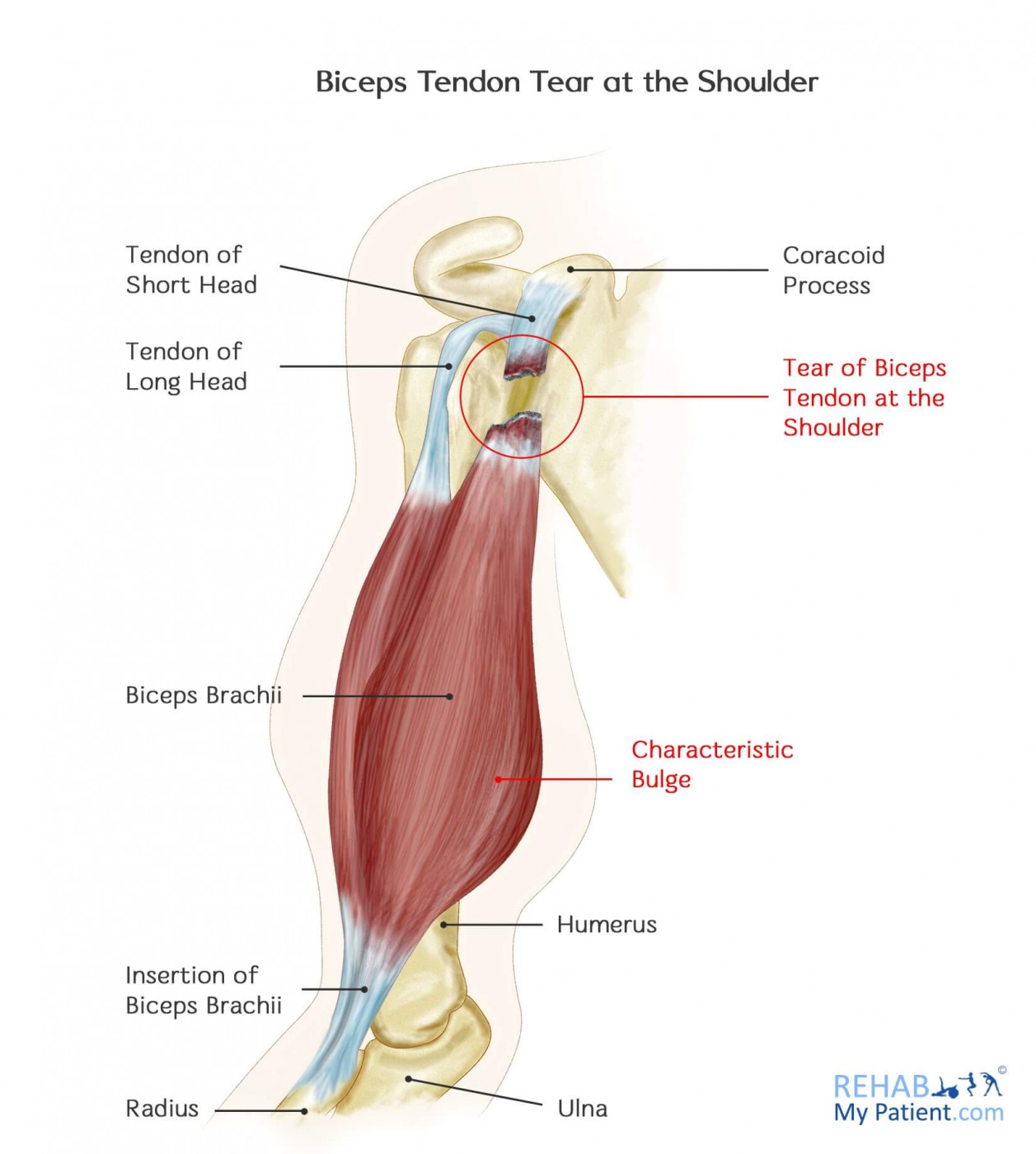Biceps Tendon Tear at the Shoulder
Posted on 13th Jul 2017 / Published in: Shoulder

The bicep muscle is located in the front of your upper arm. It helps you to bend the elbow and rotate the arm. It also helps to make sure the shoulder blade is stable. Tendons keep the muscle attached to the bones. The biceps tendons attach the biceps to the bones in the elbow and the shoulder. If the bicep is torn at the shoulder, you could end up with significant loss of strength n the arm and not be able to forcefully turn the arm from the palm up to the palm down. Many people are still capable of functioning with the tear and a few sessions of manual therapy is all that is needed to alleviate symptoms. For others, surgery is the only option to repair the tendon.
Biceps Tendon Tear at the Shoulder Anatomy
The shoulder is a ball-and-socket joint that is composed of three bones: the upper arm bone (humerus), the collarbone (clavicle) and the shoulder blade (scapula). The head of the upper arm fits into the rounded socket of the shoulder blade. A combo of the tendons and muscles keep the arm centered around the socket of the shoulder. The tissues are referred to as the rotator cuff, which cover the head of the upper arm bone and attach it to that of the shoulder blade.
The upper part of the biceps muscle contains two tendons that keep the bones attached to the shoulder. The long head keeps the top of the shoulder attached, while the short head is attached to a bump on the shoulder blade.

How to Treat Biceps Tendon Tear at the Shoulder:
- Surgery
If a full rupture of the tendon has occurred, you will see a strange lump, or your upper arm may look a strange shape. In cases of full rupture, surgery is usually recommended within the first 2 weeks. - Rest
Avoid any heavy lifting and overhead activities to minimize swelling and alleviate pain. A sling may be required for a short amount of time while recovering.
- Ice
Apply ice packs to the area in 10 minute intervals multiple times throughout the day to help keep swelling at bay. Avoid applying ice directly to the skin.
- Anti-Inflammatory Medications
Drugs like aspirin, ibuprofen and naproxen help to reduce swelling and pain.
- Physical Therapy
Strengthening and flexibility exercises help to restore movement and strengthen the shoulder area. During physical therapy your practitioner will likely massage around the area, do some stretches to the arm and shoulder, and recommend an exercise program. Electrotherapy such as ultrasound or LASER can also be useful, as well as acupuncture for pain relief.
Tips:
- Older individuals have put a lot more wear and tear on the tendons than those who are younger. Tearing is almost always caused by lifting something too heavy. By protecting the shoulder, you can help to minimize the chance of injuring the tendon.
- Minimizing overhead activities is beneficial to your shoulder. Too heavy of a load when weightlifting is one of the main reasons why people end up injuring the shoulder. Many jobs require people to lift heavy objects and place a lot of wear and tear on the tendons, which causes injury.
- Smoking can affect the nutrition in the tendon, so cutting back on smoking will go a long way to improve shoulder health.
- Avoid using corticosteroid medications as they have been linked to an increase in muscle and tendon weakness.
- Repeatedly using the shoulder can cause additional wear and tear to the joint, especially the small joint of the shoulder known as the AC (acromioclavicular) joint. This can lead to further problems in the shoulder such as shoulder impingement syndrome.
Sign UP
Sign up for your free trial now!
Get started with Rehab My Patient today and revolutionize your exercise prescription process for effective rehabilitation.
Start Your 14-Day Free Trial